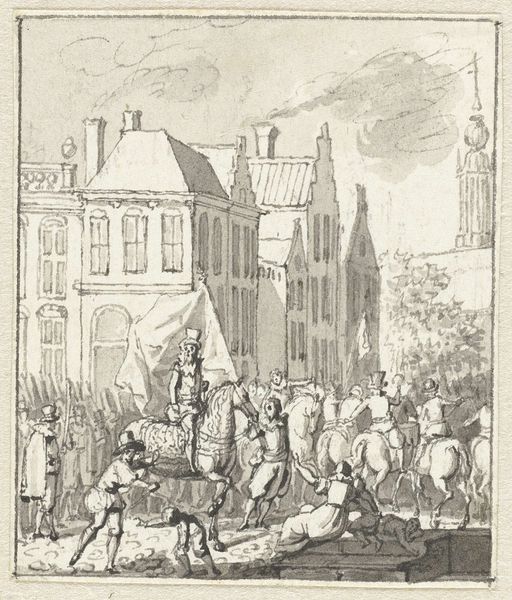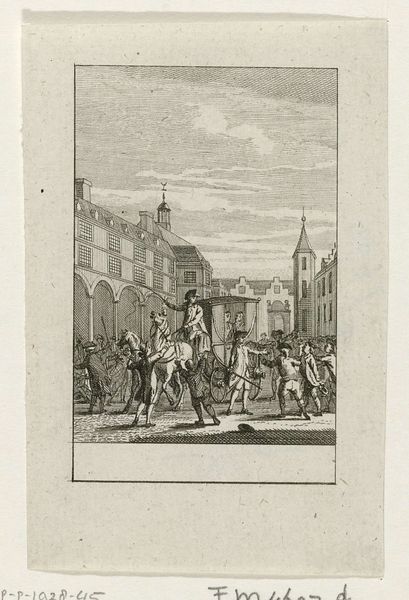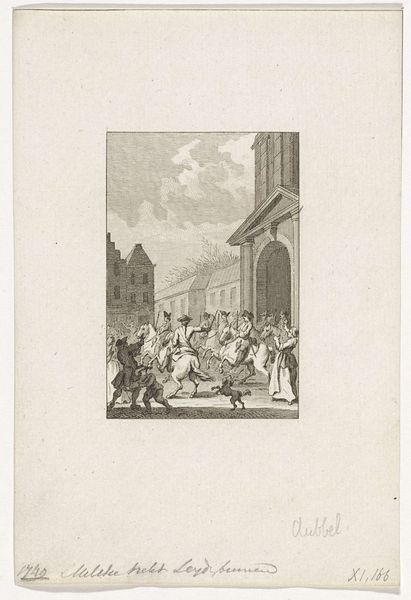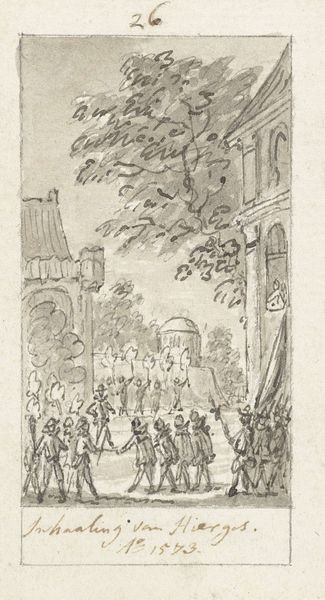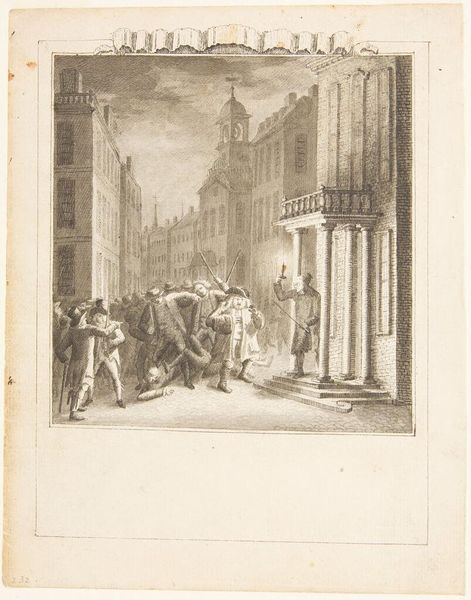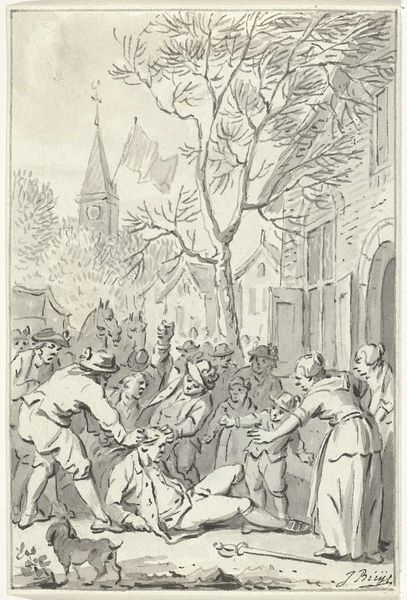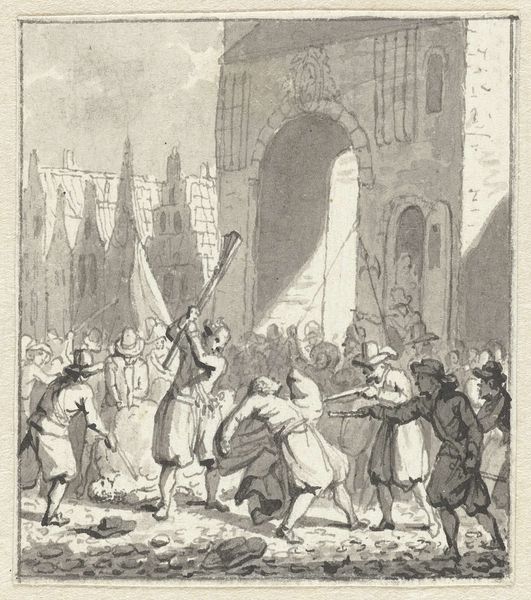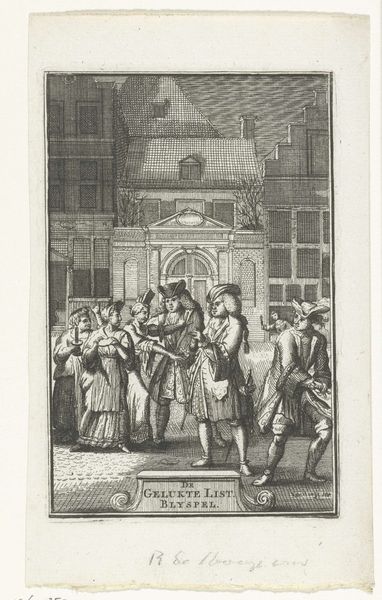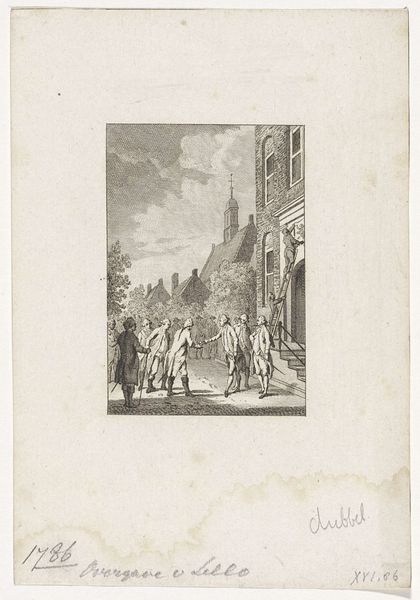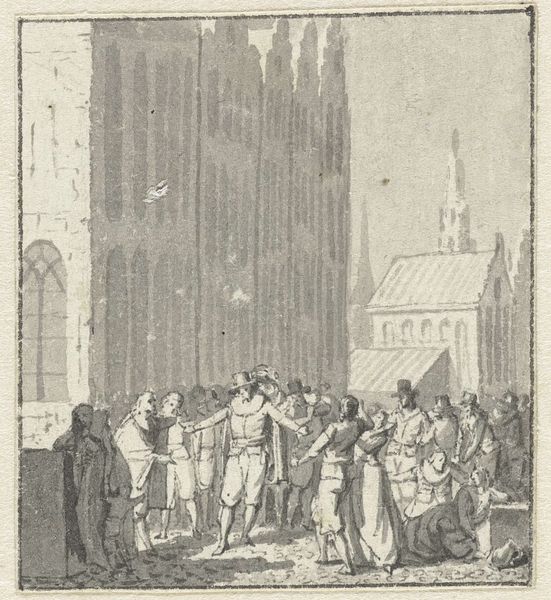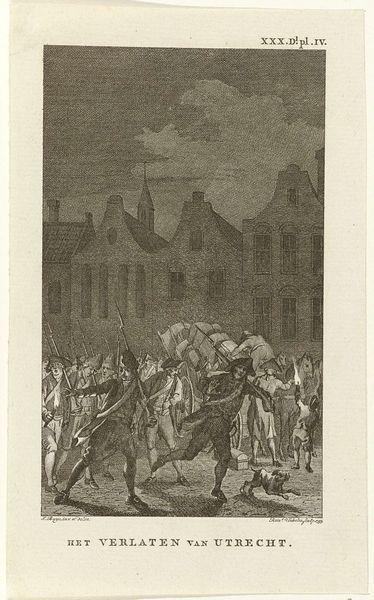
drawing, ink, pen
#
drawing
#
baroque
#
ink
#
pen
#
cityscape
#
genre-painting
#
history-painting
Dimensions: height 65 mm, width 55 mm
Copyright: Rijks Museum: Open Domain
Curator: This ink and pen drawing, dating from somewhere around 1700 to 1800, is titled "In 't Jaar 1578," and its creator remains anonymous. It's currently held here at the Rijksmuseum. What strikes you about it initially? Editor: Well, there’s a definite tension, a brewing storm. It feels chaotic but… poised. Like right before everything spills over. I also find its greyscale shades captivating; it lends the drawing this dreamy yet gritty quality. Curator: The scene certainly appears fraught. The date in the title refers to a key moment of conflict during the Dutch Revolt, The Alteration, which saw Amsterdam transition from a Catholic to a Protestant city. One could view it as capturing a key moment in that transition. The drawing manages to encapsulate not only genre-painting conventions but historical ones as well. Editor: History's interesting… it looks almost like it wants to burst right off the page with raw immediacy. There's an incredible level of frantic energy buzzing around those figures; some gesturing wildly, some maybe fighting? A clash of bodies amidst those grand buildings... what's the psychological weight that architectural backdrop bears, you think? Curator: That's astute. Architecture in art is rarely neutral. It speaks to permanence, to societal structure. Here, it magnifies the contrast: fleeting human conflict against the backdrop of established power. Consider the archways and windows – repeated motifs creating an almost cage-like feeling. This city, once a bastion of one faith, now witnesses upheaval. Editor: That makes perfect sense, actually. All that solid architecture serves as kind of a somber mirror, maybe? To the very volatile dramas unfolding here. It’s interesting how the greyscale forces you to feel the emotions through composition. You kind of have to tune in to the energy of the scene more carefully. Curator: Precisely. Without the distraction of color, the artist directs our attention to the core themes of disruption, societal shift and uncertainty. These visual strategies all carry enormous cultural implications tied to iconoclasm and transition in a specific time. Editor: Looking again, you feel that fragility of peace even more deeply now. And there’s something else – a universal aspect, too: anytime convictions clash, whether religiously fueled or… otherwise? There will be disruption and… cost. Anyway, food for thought! I am feeling a bit restless myself now. Curator: Indeed! Perhaps that unrest is the mark of any compelling historical depiction that still resonates across the ages.
Comments
No comments
Be the first to comment and join the conversation on the ultimate creative platform.
